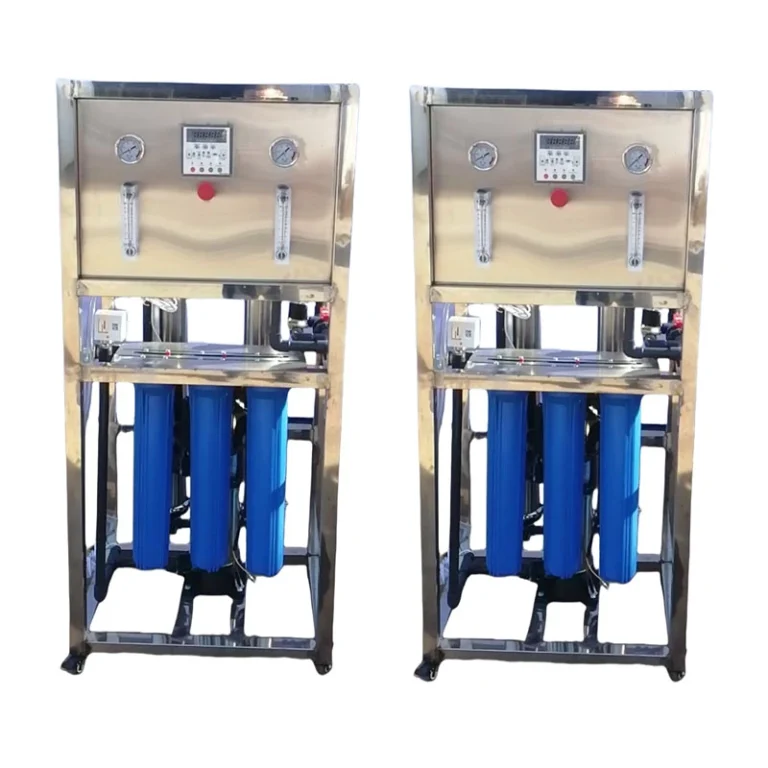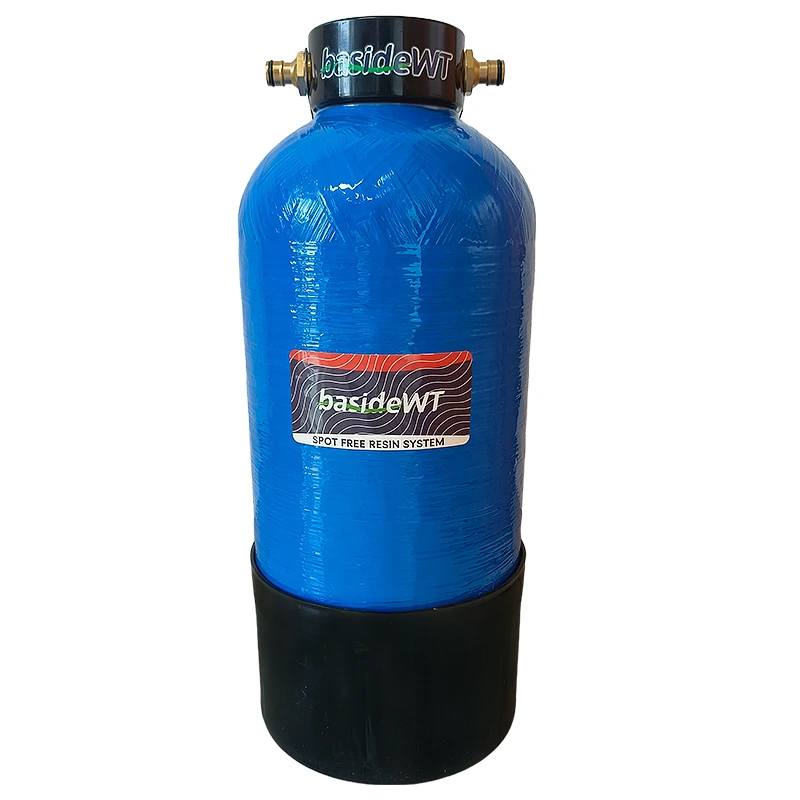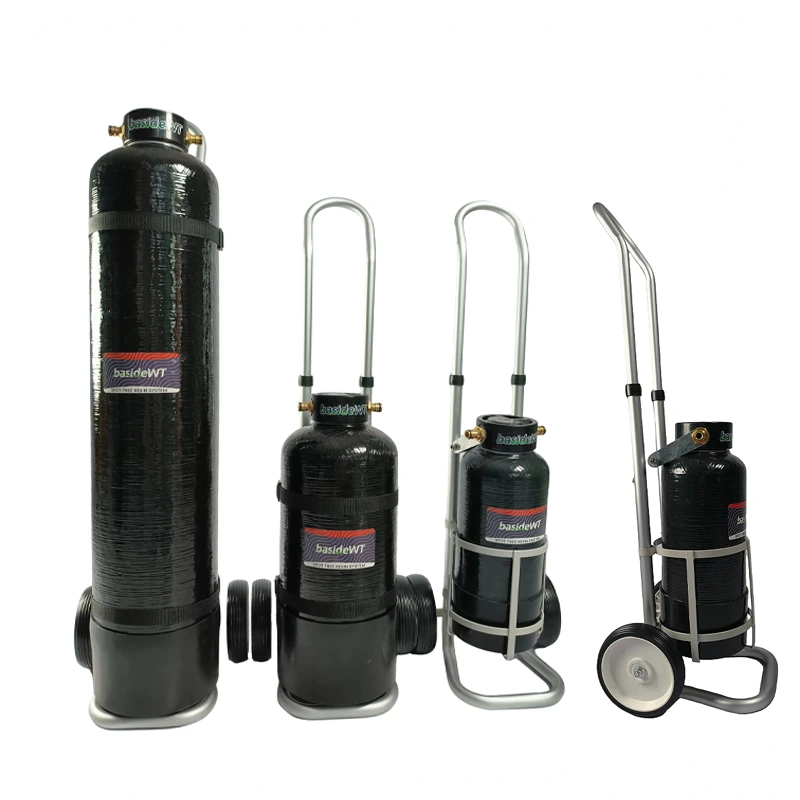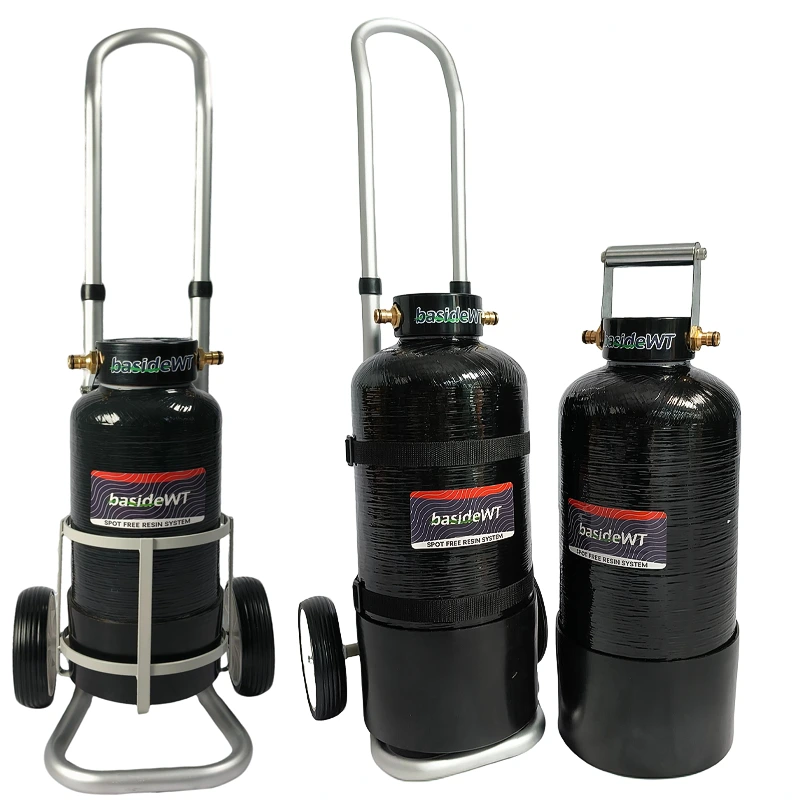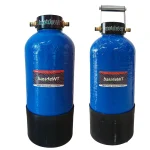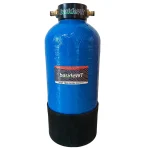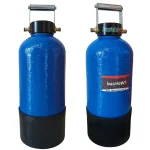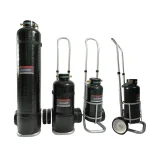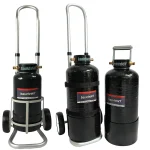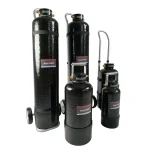BasideWT- Whole Home Water Filtration System & Replacement

Custom Deionized Water Cleaning System with Blue Filter Tank for car Wash and window cleaning
PRODUCT PARAMETERS
-
- Product Name: Deionized Water Cleaning System
- Water Filter Media: Mixed Bed Resin
- Color:</strong>Blue/Black
- Cleaning Type: 0 TDS pure water without spot
- Feature: Spotless and No Water Scale
- Accessories: Frp tank , hose,Adaptors,Handle
- Type of Filtration: Deionized (DI) Water Filtration Technology
- Applications: car washes, window cleaning, solar panel maintenance
- Brand: basideWT
- Packing: Standard Exportation Package
In the world of car detailing and window cleaning, one of the most effective solutions to ensure streak-free surfaces and deep cleanliness is using a Deionized Water Cleaning System. This innovative technology, which removes impurities from water, has become a game-changer in the cleaning industry. By purifying water to a level where it contains no ions, the system helps achieve superior results in both automotive care and window washing. In this article, we will explore the benefits, challenges, and practical applications of Deionized Water Cleaning Systems for both car cleaning and window cleaning.
What is a Deionized Water Cleaning System?
Understanding the Basics of Deionized Water
Deionized water, also known as demineralized water, is water that has had its mineral ions removed. In a Deionized Water Cleaning System, the process involves filtering out minerals like calcium, magnesium, sodium, and iron, which are typically present in regular tap water. The resulting water is ultra-pure, leaving no residue, streaks, or water spots after cleaning. This makes it ideal for use in both car cleaning and window cleaning.
The Process of Deionization
The deionization process occurs in two main stages: cation exchange and anion exchange. In the cation exchange, positive ions such as calcium and magnesium are removed. The anion exchange eliminates negative ions like sulfate and chloride. The clean, deionized water left behind is free from these minerals and ideal for precision cleaning tasks.
Why Choose a Deionized Water Cleaning System?
Advantages of Using Deionized Water for Cleaning
Using a Deionized Water Cleaning System offers several advantages over traditional cleaning methods.
- Streak-Free Shine: Since deionized water contains no minerals, it doesn’t leave behind any residue, ensuring that your car’s paintwork or your windows remain spotless and streak-free.
- Prevents Water Spots: The absence of minerals significantly reduces water spots, as mineral deposits in regular tap water are the primary cause of this issue.
- Environmentally Friendly: Deionized water cleaning systems do not require harsh chemicals, making them an eco-friendly option for both car and window cleaning.
- Saves Time and Effort: With deionized water, there’s no need for additional drying steps or polishing. The water evaporates cleanly without leaving streaks, saving both time and effort during the cleaning process.
A Perfect Solution for Sensitive Surfaces
The Deionized Water Cleaning System is particularly beneficial when dealing with sensitive surfaces like car paint or window glass. Regular tap water can sometimes leave scratches or mineral deposits, but deionized water eliminates these risks, providing a safer and more effective cleaning solution.

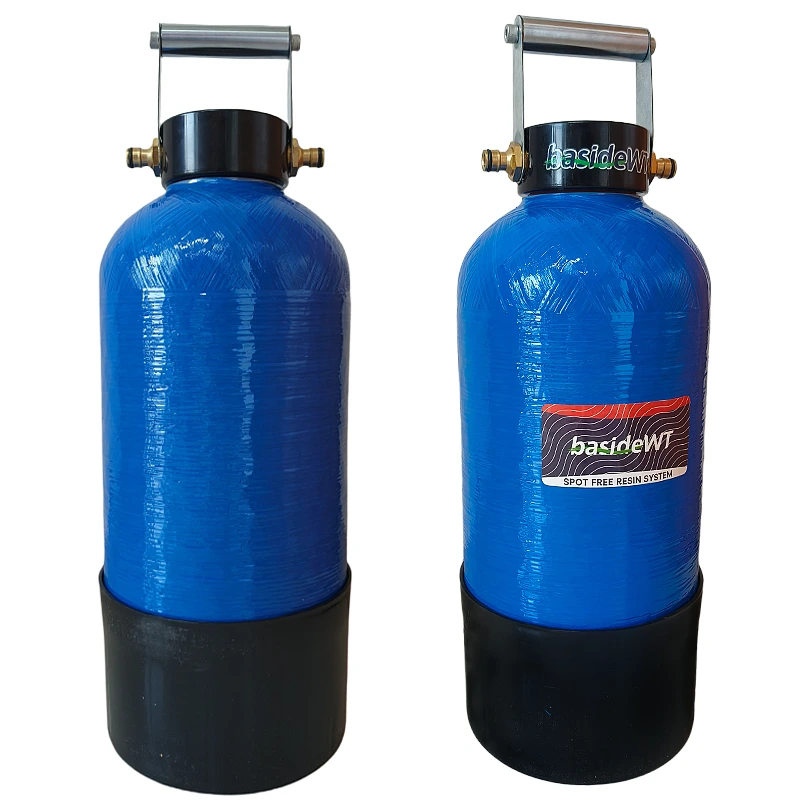
Common Challenges in Traditional Car and Window Cleaning
Issue 1: Mineral Stains and Water Spots
When cleaning cars or windows with regular tap water, it’s common to encounter mineral stains or water spots. These are typically caused by minerals like calcium and magnesium found in tap water. Over time, these stains can degrade the appearance of your car’s finish or leave windows looking cloudy.
Issue 2: Hard-to-Reach Areas
Traditional cleaning methods may struggle to reach the delicate and hard-to-reach areas on a car or window. Water droplets often settle in crevices, which leads to stubborn stains that are difficult to remove.
Issue 3: Overuse of Chemicals
In an effort to clean cars and windows effectively, many cleaning services rely heavily on chemical solutions. These chemicals can be harsh on the environment and can even cause damage to the surfaces they are intended to clean over time.
Solution: The Deionized Water Cleaning System
The Deionized Water Cleaning System provides effective solutions to these common cleaning challenges. Here’s how:
- Prevents Water Spots: Using deionized water significantly reduces mineral buildup and prevents water spots, ensuring a perfect finish every time.
- Enhances Reachability: When used with an appropriate tool (such as a pole or brush), purified water helps you effectively clean hard-to-reach areas and eliminates missed spots.
- Chemical-Free Cleaning: With no minerals or chemicals involved, deionized water provides a chemical-free cleaning solution. This makes it safer for the environment and reduces the risk of surface damage.
Case Study: Deionized Water Cleaning for Car Detailing
Background
A car detailing company in New York City decided to implement a Deionized Water Cleaning System in its operations to address issues of mineral deposits and water spots in their car washing process. Before the switch, they faced customer complaints about water spots on vehicles, particularly during the summer months when water evaporation is faster.
Solution
The company invested in a high-quality Deionized Water Cleaning System that was designed specifically for auto detailing. They replaced their traditional water source with deionized water and adopted a cleaning process that included using deionized water to wash, rinse, and finish the vehicle.
Results
The results were immediate. Vehicles no longer showed signs of water spots or mineral deposits, and customers reported higher satisfaction levels. The detailing company also noticed a reduction in the amount of time spent on drying and polishing, as deionized water naturally left surfaces clean without residue.
Case Study: Window Cleaning with Deionized Water
Background
A professional window cleaning service in California faced challenges when cleaning high-rise windows, where access was difficult, and water spots were a recurring issue. Their standard cleaning methods were not effective in removing mineral streaks and left behind noticeable residues.
Solution
By incorporating a Deionized Water Cleaning System, the window service was able to eliminate the use of traditional cleaning chemicals. The deionized water was used in conjunction with long reach poles and microfiber brushes for a streak-free finish.
Results
After adopting the Deionized Water Cleaning System, the company reported a significant improvement in cleaning results. Windows were left spot-free, and the risk of mineral buildup was eliminated, ensuring that the customers were happy with the results each time.
How to Choose the Right Deionized Water Cleaning System
Factors to Consider
When selecting a Deionized Water Cleaning System, there are several factors to consider to ensure you get the best results for your car or window cleaning needs:
- Flow Rate: The system’s flow rate should be adequate to meet your cleaning requirements. A higher flow rate ensures that you can clean large vehicles or buildings more quickly.
- Water Capacity: Make sure the system has a sufficient water capacity to handle multiple cleaning jobs without running out of deionized water.
- Cost: While the initial investment in a Water Cleaning System may be higher than traditional cleaning equipment, the long-term savings on chemicals, water usage, and time should be considered.
FAQs
Choosing the perfect water treatment system depends on your specific water quality, household size, and needs. We make it easy with our 3-step process:
Water quality testing – analyze your water for contaminants, hardness, and other factors.
Personalized Consultation – Our experts recommend systems based on your results, budget, and water usage.
Customized Solution – From whole-house filtration to targeted solutions (e.g., RO for drinking water, softeners for hard water), we tailor the system to your home.
To determine your water flow rate in gallons per minute (GPM), follow these simple steps:
Prepare for Testing:
- Prepare for Testing:
- Ensure all water fixtures in your home are turned off
- Select the faucet closest to your main water supply line (usually the kitchen sink or an outdoor spigot)
- Conduct the Test:
- Fully open the selected faucet
- Time how many seconds it takes to fill a 1-gallon container
- Repeat the test 2-3 times for accuracy
- Calculate Your Flow Rate:
Use this formula: Flow Rate (GPM) = 60 ÷ Fill Time (seconds)Example Calculation:- If your 1-gallon container fills in 15 seconds
- 60 ÷ 15 = 4 GPM
For more precise measurements or whole-home flow rate analysis, contact our water system specialists. We can help you determine if your current flow rate meets the requirements for any water treatment systems you’re considering.
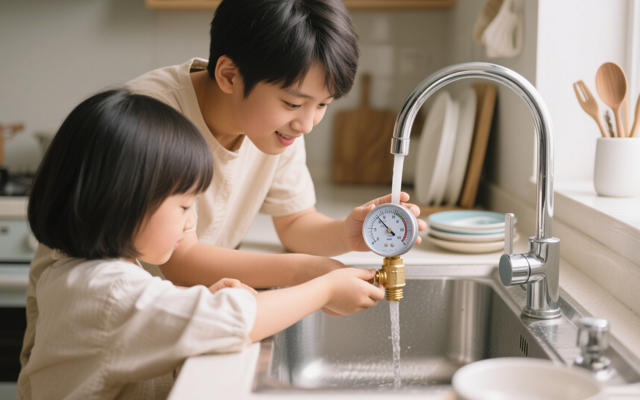
1. Check Multiple Fixtures
Test water pressure at different faucets, showers, and appliances (e.g., kitchen sink, bathroom sink, outdoor hose).
If only one fixture has low pressure, the problem is likely localized (clogged aerator, faulty valve, or pipe issue).
If all fixtures have low pressure, the issue is systemic (main supply, pressure regulator, or water heater).
2. Inspect the Aerator or Showerhead
Unscrew the faucet aerator or showerhead and check for mineral deposits, debris, or rust.
Soak it in vinegar overnight to dissolve buildup, then rinse and reattach.
3. Check the Main Shutoff Valve
Locate the main water shutoff valve (usually near the water meter or where the main line enters the house).
Ensure it’s fully open (turn clockwise to close, counterclockwise to open).
1. Activated Carbon Filters
- Removes:
✅ Chlorine & chloramines
✅ Bad tastes & odors (e.g., sulfur)
✅ Volatile Organic Compounds (VOCs)
✅ Some pesticides & herbicides
❌ Does not remove heavy metals, dissolved minerals, or microbes
2. Reverse Osmosis (RO) Systems
- Removes:
✅ Heavy metals (lead, arsenic, mercury, cadmium)
✅ Dissolved salts (fluoride, nitrates, sulfates)
✅ Microplastics & sediment
✅ Bacteria & viruses (if combined with UV)
✅ Chlorine & chemicals (with carbon pre-filter)
❌ May remove beneficial minerals (can be remineralized)
3. Water Softeners (Ion Exchange)
- Targets:
✅ Calcium & magnesium (hardness)
✅ Low levels of iron & manganese
❌ Does not remove bacteria, chlorine, or heavy metals
4. UV Purifiers
- Kills:
✅ Bacteria (E. coli, coliform)
✅ Viruses (rotavirus, hepatitis)
✅ Protozoa (Giardia, Cryptosporidium)
❌ Does not remove chemicals, metals, or sediment
5. Sediment Filters
- Removes:
✅ Sand, rust, dirt
✅ Large particles & silt
❌ Does not remove dissolved contaminants
6. Whole-House Filtration Systems
Combines multiple methods (carbon + sediment + UV) for broad protection.
- UV: Kills bacteria/viruses but doesn’t remove chemicals or particles.
- RO (Reverse Osmosis): Removes 95–99% of contaminants (heavy metals, dissolved salts) but requires electricity.
- Activated Carbon: Absorbs chlorine, odors, and organic compounds—ideal for pre-filtration.
REQUEST A QUOTE
RELATED PRODUCTS

Best 6 stage Under-sink RO Purifier UV Sterilization Home Reverse Osmosis Drinking Water Filter System
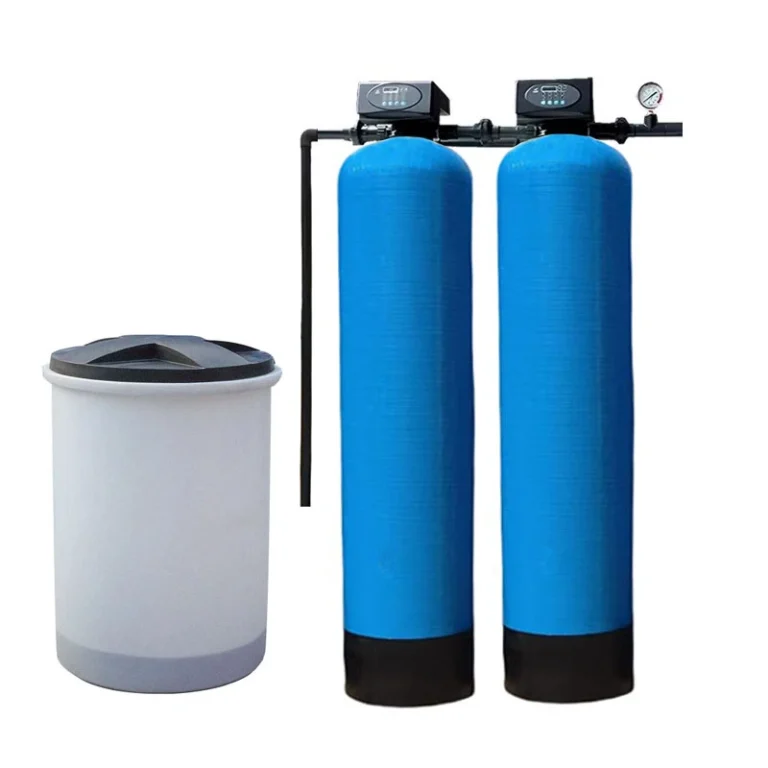
Best Automatic Water Softener system home for Hard Water Purification & Treatment Solutions

Premium Car and Window Cleaning System for Homeowners with Dual DI Tanks Purifier

1500L/H Seawater Desalination Equipment Boat Watermaker Salt Water to Drinking Water System
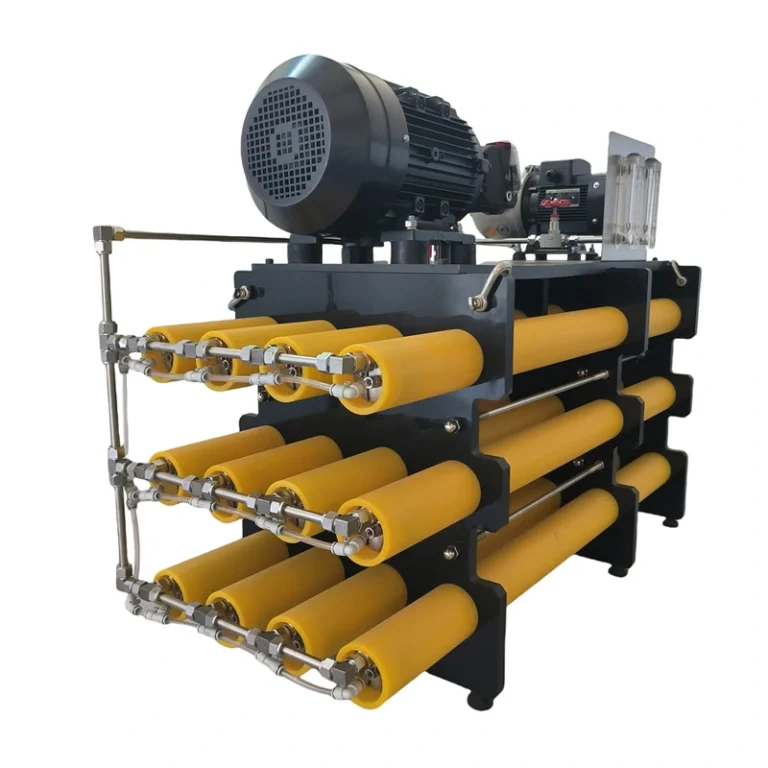
BasideWT 500l/h 1000l/h Seawater Desalinator Yacht Watermaker Boat Desalination Salt Water to Drink Water RO Plant
